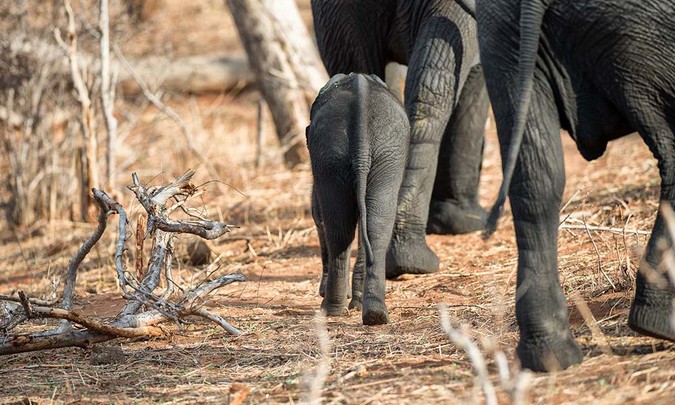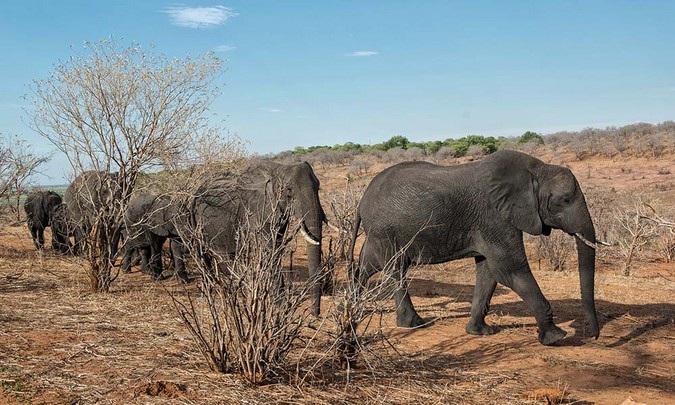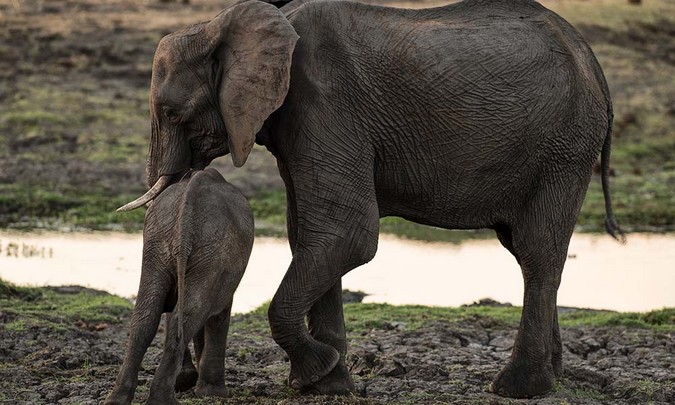
Elephants in southern Africa have been the subject of much debate recently, particularly after Botswana announced that it was reviewing its elephant management strategies. The process of determining how best to manage elephants in southern Africa went one step further over the past weekend when the heads of state of the countries with the largest remaining elephant populations met in Kasane, Botswana to formulate a collaborative management strategy.
This a brief summary of the strategy adopted by Angola, Botswana, Namibia, Zambia and Zimbabwe, which jointly make up ‘The Kavango Zambezi Transfrontier Conservation Area (KAZA) – which is home to more than half of the remaining African savannah elephants. For a more detailed understanding of this strategy, please download the strategy document here.
Please note that this document does not directly address the issues currently creating tension, such as Botswana’s trophy hunting and culling discussions, or the reported attempts by KAZA countries and South Africa to convince CITES to permit trade in ivory. Rather, this document provides the umbrella strategy within which those matters will be researched and potentially implemented.

SUMMARY OF THE KAZA ELEPHANT MANAGEMENT STRATEGY:
BACKGROUND
1. The wellbeing of these elephant populations hinges on maintaining their habitats and upon ensuring the movement of elephants from more densely-populated areas in Botswana, Zimbabwe and Namibia, to areas in Angola and Zambia – by securing wildlife migration movement corridors.
2. The latest elephant surveys indicate a population of at least 220,000 elephants across the five KAZA countries, with 85% concentrated in Botswana and Zimbabwe. Populations in southeast Angola and southwest Zambia have suffered major declines due to poaching. The area of Kavango and Zambezi (formerly Caprivi) in Namibia have suffered from increased poaching, although elephant populations are reportedly growing.
3. Growing elephant populations may pose a threat to diminishing riverine and woodland habitats, and the species dependent upon such habitat.
4. Increasing elephant populations in certain areas, combined with human population growth and settlement in existing wildlife dispersal areas is leading to increases in human-elephant conflict, resulting in increased illegal killings and the increased need for problem animal control.
5. The KAZA portions of Angola and Zambia have large tracts of suitable elephant habitat, but with smaller populations of elephants and other wildlife (and concomitant lower human densities), which should provide a “pull” effect from areas with higher elephant populations, via the wildlife migration corridors.
6. Wildlife migration corridors are under various stages of intactness and some face the threat of permanent closure due to encroaching human settlements, agriculture and infrastructure developments (roads, rail, riparian), livestock disease control measures (veterinary fences) and mining.
7. Long-term monitoring of the KAZA elephant population is required, as well as identification and mitigating of threats to elephant populations. One such threat is climate change, to which elephants are already vulnerable in areas of limited water supply. This dynamic exacerbates human-elephant conflict.

OBJECTIVES AND ACTIVITIES
1. Facilitate integrated land use to ensure long-term ecosystem integrity and connectivity for KAZA’s elephant population. Short- and medium-term activities in this regard include ongoing and increased data collection and analysis, ensuring an adaptive management process, protection of Angolan water sources of the four major rivers flowing through KAZA, awareness-raising amongst various sectors that impact on elephants, providing formal legal recognition for wildlife migration corridors, and re-alignment or removal of existing veterinary fences.
2. Maintain and manage KAZA’s elephants as one contiguous population. Short- and medium-term activities in this regard include aerial surveys, analysis of elephant movement data, understand data on human distribution and land-use, better use of existing elephant poaching data (MIKE), and integrating elephant management strategies for each KAZA country into this strategic planning framework.
3. Promote the co-existence of humans and elephants for ecological, social and economic benefits. Short- and medium-term activities in this regard include supporting alternative livelihoods for local communities that help mitigate conflict, engaging with communities about conflict mitigation and building capacity for data collection, and to develop policies and practices to permit communities to sustainably manage, utilise and benefit from elephants and other wildlife.
4. Reduce the illegal killing of elephants and the illegal trade in elephant parts. Short- and medium-term activities in this regard include mobilising financial, human and material resources to combat the illegal killing and trade, coordination of transboundary ground-based patrols and air surveillance as well as cross-boundary pursuit of wildlife criminals, review existing legislation to permit extradition of wildlife criminals, engaging communities to help fight wildlife crime, better use of DNA analysis to better inform evidence-led prosecutions, and aligning of customs and immigration procedures with regard to the movement of illicit wildlife products and better training of personnel in this regard.
5. Establish a high-level decision-making process to achieve the above. Short- and medium-term activities in this regard include a 5-year review process, ensuring that KAZA partner countries allocate sufficient financial and other resources in these regards, and establishing reporting and feedback mechanisms.

To comment on this story: Login (or sign up) to our app here - it's a troll-free safe place 🙂.![]()






